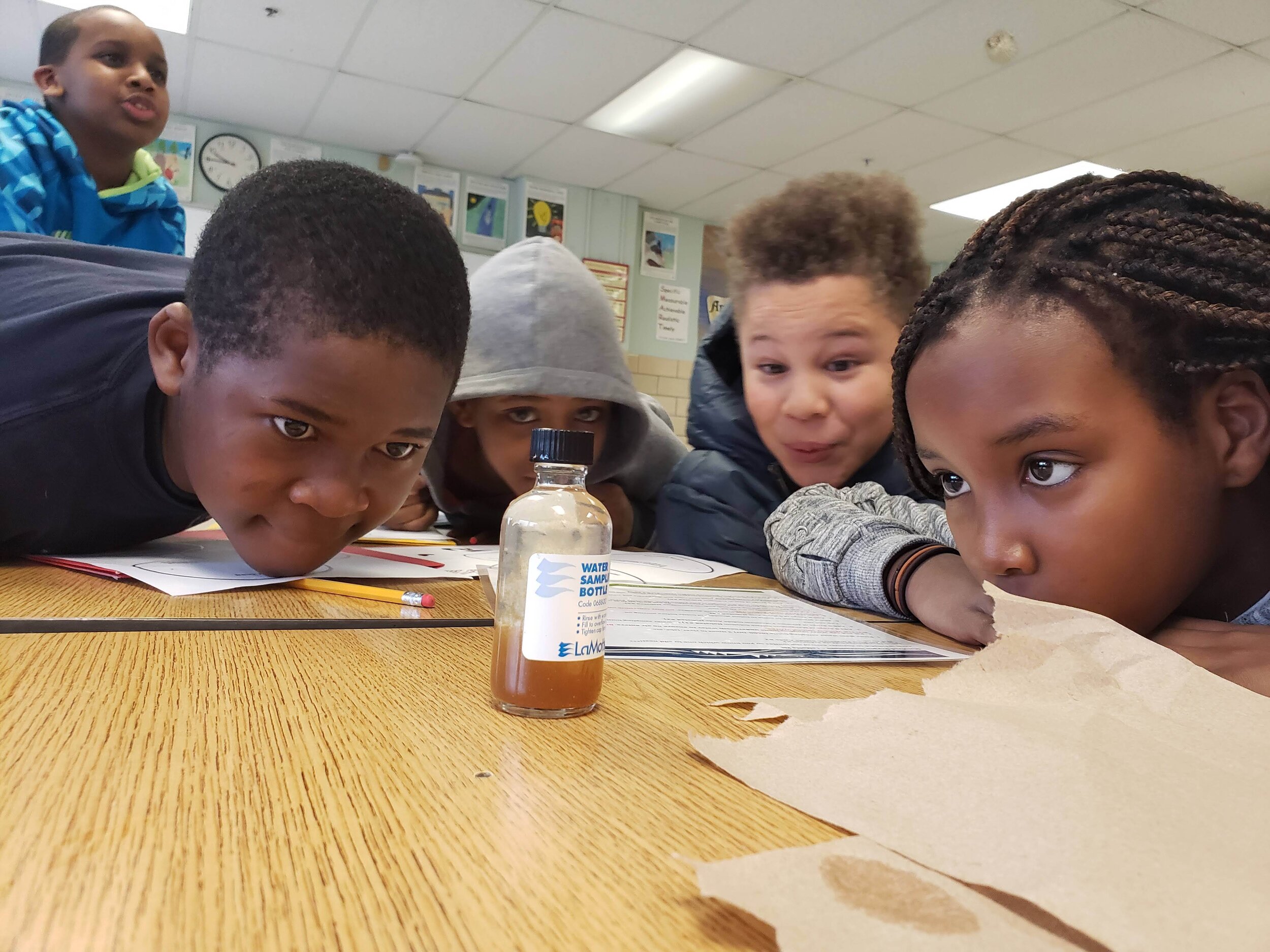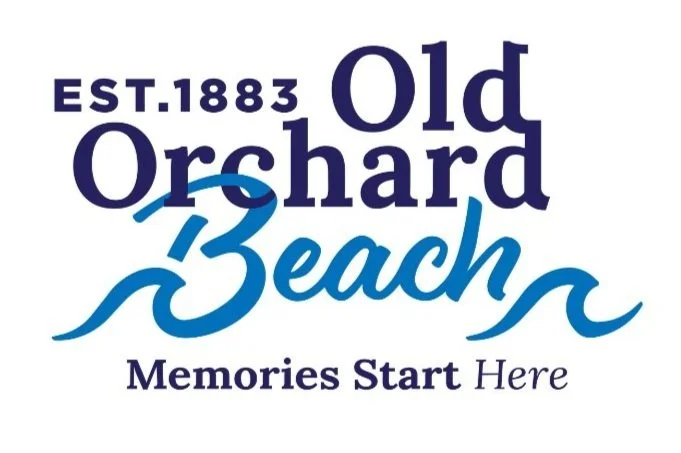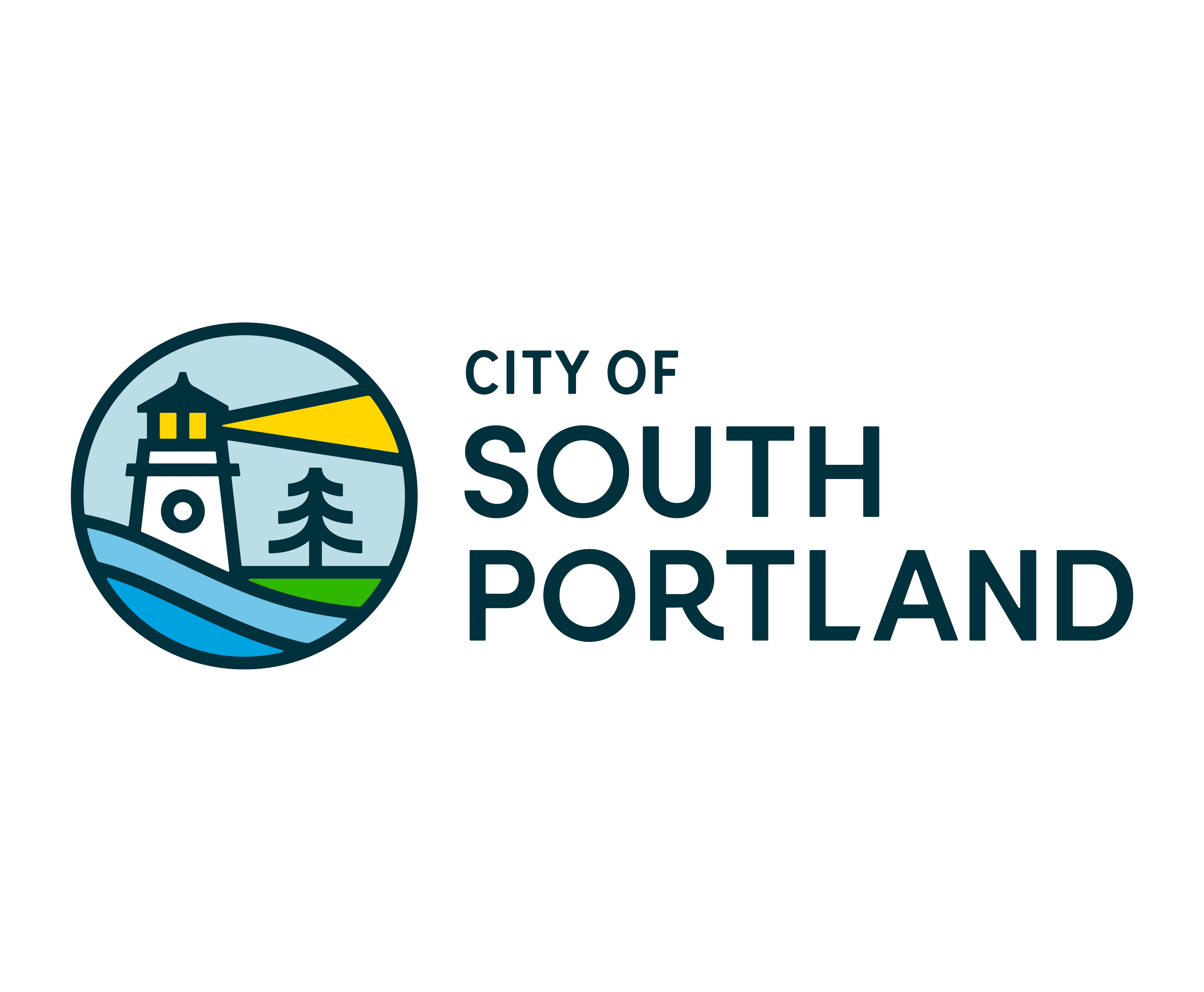
Education
Education has been at the heart of the District’s mission for more than 75 years.
Our youth education program focuses on connecting individuals with their local environment.
Our STEM-based lessons are developed in consideration of the Next Generation Science Standards and led by student investigations. Lessons can be delivered to inside or outside classrooms, camps, community groups, and others. We want to provide your students with a meaningful education program – contact us to discuss your needs. Free and discounted lessons may be available.
Sponsor Our Future
District Education Programs Need Your Support
When you sponsor District education programs, you not only support natural resource education, you also contribute to a healthier future for our community and the planet.
Thank You to Our Education Sponsors!

Some students in Maine get the unique experience of raising brook trout in their classroom. In Southern Maine, trout eggs are provided by Maine Inland Fish and Wildlife's hatchery located in Casco, Maine. This video provides a tour of the hatchery for students to understand where their fish eggs came from and the importance of fish hatcheries for the health of Maine's lakes and rivers.
Soil & Agriculture
Lesson Descriptions
-
Help your students understand the connection between their fork and farmers’ fields. Learn about food supply chains and the differences between monocrops and multi-crops. This is an excellent addition to annual Maine Harvest Lunch celebrations.
MS-ESS3-3, MSLS2-5, K-ESS3-3
-
Pollinators connect ecosystem elements and support our farms. Learn about these important creatures and the struggles they are facing today. Help protect pollinators by planting their favorite plants and creating habitat.
MS-ESS3-3, MSLS2-5, K-ESS3-3
-
Plants need two key nutrients, nitrogen and phosphorous, to grow. Students learn how these nutrients cycle throughout the ecosystem and the impacts of when they are out of balance.
HS-LS2-4, HS-LS2-7, MS-ESS3-1, MS-LS2-5, 5– LS2-1
-
Which soil is the best filter? Students conduct an experiment comparing the characteristics of different soil types. Based on their observations, students will make real world connections to agriculture and pollution.
HS-ESS2-5, HS-LS2-7, MS-ESS3-1, MS-LS2-5
-
How healthy is your soil? Students begin to answer this question by collecting soil samples around the school campus. With their samples, they test soil texture, pH, nitrogen, potassium, and phosphorous.
-
Soils are the foundation of the environment, farms, and food! Students will learn about the importance of soil, what it’s made of, and how to test the health of a soil sample.
HS-LS2-4, HS-LS2-7, MS-ESS3-1, MS-LS2-5, 5– LS2-1
Water & Conservation
Lesson Descriptions
-
Everybody is somebody’s next meal. Students build a pond food web to learn how energy moves between plants, animals, and the environment.
MS-LS2-3, 5-LS2-1
-
Learn how these aquatic macroinvertebrates can tell us the health of the water.
Request Benthic Bugs and Bioassessment for students to identify simulated bug populations in the classroom (ideal for winter lessons).
Request Marvelous Macros for students to identify real bug populations in the classroom or by visiting a nearby stream to sample macros in the wild.
HS-ESS3-1, HS-LS2-7, HS-ETS1-3, MS-LS-1, MS-LS2-4, MSESS3-3
-
Learn how plants can be clean water heroes and protect water bodies from polluted runoff. Students build their own model to demonstrate the importance of plants!
MS-LS2-4, MSESS3-3, 2–ESS2-3, K-ESS3-3
-
Get ready to attend a town meeting about a dam removal. Students become different stakeholders to learn the process of environmental decision making.
HS-ESS3-1, HS-ESS2-2, HS-LS2-7, HS-LS2-7, HS-ETS1-3, MSESS3-3
-
Learn about the most common water pollutant, the process of erosion, and how to prevent it. A school yard erosion scavenger hunt turns students into real environmental stewards.
MS-LS2-4, MSESS3-3, 2–ESS2-3, K-ESS3-3
-
Travel through your watersheds and discover the connections between water quality and land use first hand through multiple stops along the way.
HS-ESS2-2, HS-ETS1-3, HS-LS2-7, MS-LS2-4, MSESS3-3, 2–ESS2-3, K-ESS3-3
-
Meet Flow, the water droplet. Students follow her journey from land to stream to connect how actions on land affect water resources.
MS-LS2-4, MSESS3-3, K-LS1-1, K-ESS3-3
-
Our drinking water can come from surface waters or aquifers. Learn how our actions above ground can impact the health of water deep underground.
HS-ESS3-1, MSESS3-3, MS-ESS2-4, 2–ESS2-3, K-ESS3-3
-
Students learn about water quality parameters (algae, clarity, temperature, dissolved oxygen, hazardous chemicals, harmful bacteria) to determine healthy levels for drinking water, recreation, and aquatic life.
-
Students learn about best management practices and design site plans to prevent pollutants from reaching the water.
MS-LS2-4, MSESS3-3, 2–ESS2-3, K-ESS3-3
-
Turn your classroom into a fish hatchery as students raise brook trout from egg to fry! In this multi-lesson unit, students observe the life cycle of brook trout and learn about the environmental factors that affect aquatic species before releasing the trout into a local stream.
HS-LS2-4, HS-ESS2-2, MS-LS2-4, MSESS3-3
-
Students tell the journey of five alewives as they travel down “rivers” and encounter stormwater pollutants to observe the cumulative impacts of human activities.
MS-LS2-4, MSESS3-3, K-LS1-1, K-ESS3-3
-
Learn about brook trout anatomy, habitat, adaptations, life cycle, and the challenges of survival to adulthood. Students encounter different habitat, food, and predation obstacles through multiple rounds of gameplay.
MS-LS1-4, MS-LS2-1, MS-LS2-4, MS-ESS3-4
-
Students explore different human impact scenarios and how they change aquatic ecosystems. Recommended as follow up to Aquatic Food Webs lesson.
MS-LS2-3, 5-LS2-1, K-ESS3-3
-
Students learn about water movement and distribution through activities that get you moving through the cycle.
Request Connecting the Drops for elementary school grades.
Request Wonders of the Water Cycle for middle school grades.
MS-ESS2-4, MSESS3-3, MSLS2-3, 2–ESS2-3, K-ESS3-3, K-LS1-1
-
Students evaluate the qualities of eight common water pollutants to determine how they impact drinking water, recreation, and aquatic life.
MS-ESS3-4
-
We all live in a watershed. Students make connections to their local watershed through hands-on models, stories, and maps.
Request My Watershed for elementary school grades.
Request What’s a Watershed? for middle school grades.
Request EnviroScape Watershed for middle and high school grades.
HS-ESS2-2, HS-LS2-7, MS-LS2-4, MSESS3-3, 2–ESS2-3, K-ESS3-3
-
Students use water quality parameters (pH, salinity, turbidity, conductivity, and dissolved oxygen) to learn more about their water samples.
HS-ESS3-1, HS-LS2-7, HS-ETS1-3, MSESS3-3
Forestry
Lesson Descriptions
-
While identifying and collecting data about local trees, we discuss how invasive pests, like the Emerald Ash Borer, impact native trees in Maine.
MS-LS2-4, MS-LS2-5, MS-ESS3-1, MS-ETS1-1, K-ESS3-3
-
What makes a good plant invader? Students will discover the characteristics of invasive plants and how humans can prevent them from spreading.
MS-LS2-4, MS-LS2-5, MS-ESS3-1, MS-ETS1-1, K-ESS3-3
-
Students identify examples of economic, ecological, educational, cultural, and recreational values and apply them to trees impacted by invasive forest pests. Recommended as background lesson to Invasive Forest Pests.
MS-LS2-4, MS-LS2-5, MS-ESS3-1
Community
Service learning integrates our lessons with meaningful community service to enrich students’ learning experience, teach civic responsibility, and strengthen communities. Your service learning project will be tailored to your group. All projects will:
Engage students with their local community and surroundings
Connect the community service project to relevant lesson topics
Include District coordination and support throughout project
Request a Lesson
Program Rates:
One 45-60 minute lesson: $400
Additional class or lesson during visit: $100
Field Trips & Service Learning: Contact us for an estimate.
Lesson materials are available to borrow pending District needs. Cost varies per lesson.
Scholarships may be available. Contact us for more information.





















